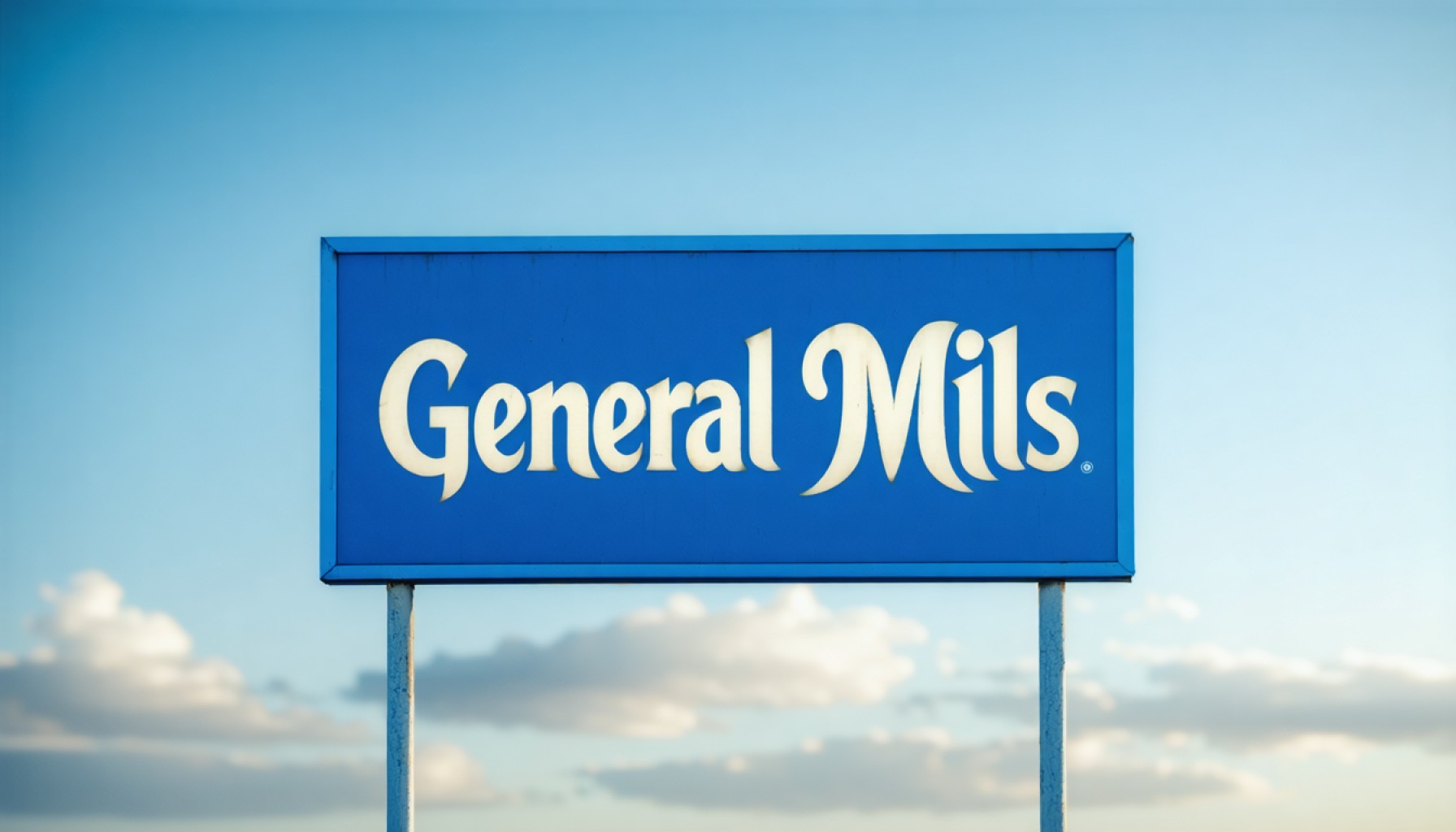- General Mills faces a significant debt challenge, with $14.2 billion in debt and $521.3 million in cash, leaving a net debt of $13.7 billion.
- The company’s ability to convert earnings into free cash flow is strong, achieving 69% of EBIT as cash flow, indicating a capability to meet obligations.
- The debt-to-EBITDA ratio stands at 3.2, highlighting a higher-than-average leverage that raises concerns among cautious investors.
- General Mills must carefully balance leveraging its debt while maintaining liquidity to ensure long-term financial stability and growth.
- Investors are closely observing General Mills’ financial strategies to determine if future investments are viable amidst the company’s debt-driven risks.
In the bustling corridors of corporate America, where profit and sustainability dance a delicate tango, few companies embody the balance of risk and reward like General Mills. This stalwart of the consumer goods industry, renowned for household staples that fill pantries and breakfast bowls alike, finds itself under the financial microscope as it navigates the choppy waters of debt management.
Obligations are stacking up for General Mills, with a towering $14.2 billion debt looming on its balance sheet as of February 2025. The company counts only $521.3 million in cash to counterbalance this staggering figure, leaving a daunting net debt of $13.7 billion. It’s as if the company carries the weight of its iconic cereal mascots on its financial shoulders.
The pivotal question for investors circles not around this sheer volume of debt but whether General Mills wields it wisely. When it comes to leveraging assets, understanding the true health of a company’s finances often transcends balance sheets. Here, the magic lies in measuring whether earnings faithfully transform into the essential lifeblood of business prosperity—free cash flow.
In recent years, General Mills has shown a proficient knack for converting its earnings into cash, with free cash flow amounting to 69% of earnings before interest and taxes (EBIT). This indicates a decent ability to repay obligations from available resources. Yet, the company does lean on debt to amplify its returns, a strategy not without peril if economic tides shift unfavorably.
Both opportunity and hazard coexist in General Mills’ financial landscape. The company’s debt-to-EBITDA ratio hovers at a somewhat weighty 3.2, raising eyebrows among cautious investors. Such figures prompt a consideration of the broader investment strategy: one where the pursuit of yield meets the specter of risk.
The broader narrative here speaks to a universal truth for enterprises in any segment: debt, if wielded carelessly, can become chains that throttle rather than fuel growth. While General Mills shuffles along the tightrope of leverage, taking measured steps is crucial to ensuring the weight of financial obligations doesn’t tip the balance towards instability.
For General Mills, the future isn’t set in stone. The company’s ability to sustain its financial health hinges on converting efficient operations into cash flow and maintaining earnings momentum. The delicate act of juggling leverage with liquidity will define whether it can continue to thrive in a fiercely competitive marketplace. Investors, meanwhile, watch closely, measuring the tides and weighing whether to dive into the cereal maker’s stock or stick to safer ground—echoing the age-old wisdom that sometimes it’s simpler to invest in companies unburdened by debt.
Is General Mills’ Debt Strategy a Recipe for Success or Trouble?
Overview of General Mills’ Financial Health
General Mills, a titan of the consumer goods landscape, faces a critical balancing act as it manages a substantial $14.2 billion debt against a rather modest $521.3 million in cash reserves. The company’s strategic approach to leveraging assets and converting earnings into free cash flow is under scrutiny as it aims to sustain financial health and investor confidence.
Real-World Implications of General Mills’ Debt Strategy
Market Forecasts & Industry Trends:
1. Rising Costs and Commodity Prices: General Mills might face challenges related to the volatility of raw material costs. With food industry inflation, this could pressurize profit margins, necessitating a tight grip on operational efficiencies.
2. Shifting Consumer Preferences: There’s an increasing trend toward organic and health-conscious product offerings. General Mills might need to pivot its product portfolio, potentially increasing operational costs.
3. E-Commerce Growth: As more consumers turn to online shopping, General Mills has opportunities to expand its grocery e-commerce channels. This shift requires capital investment but could offer significant long-term benefits.
Evaluating Risks and Opportunities
Pros:
– High Free Cash Flow Conversion Rate: The significant conversion rate of 69% from EBIT to free cash flow underlines General Mills’ efficiency in capital management, enabling potential debt repayment and reinvestment opportunities.
– Established Brand Equity: Strong brand recognition provides a robust competitive advantage in a crowded marketplace, potentially leading to consistent revenue streams.
Cons:
– Debt-to-EBITDA Ratio: The company’s 3.2 debt-to-EBITDA ratio indicates a heavy reliance on debt, which could pose risks if market conditions worsen.
– Vulnerability to Economic Shifts: Any downturn could strain General Mills’ liquidity, with limited cash reserves to weather prolonged economic headwinds.
Actionable Tips for Investors
1. Examine FaAD-Proifikasi Products: Investors should assess how well General Mills innovates within the space of organic and health-focused products, as consumers increasingly demand these options.
2. Monitor Cash Flow Trends: Consistent monitoring of free cash flow and earnings can provide insight into the company’s ability to service debt and fund growth initiatives.
3. Watch Economic Indicators: Stay informed about macroeconomic indicators and commodity prices that could impact General Mills’ cost structure and pricing power.
Conclusion: Navigating the Tightrope
General Mills’ ability to adeptly juggle its debt obligations and operational efficiencies will dictate its future success. Maintaining a strategic balance between leveraging debt for growth and ensuring robust cash flow for operations is crucial. Investors with a keen eye on financial metrics, market trends, and evolving consumer demands can make informed decisions about the company’s stock potential.
For more insights into navigating investment landscapes, visit Forbes and Bloomberg.
